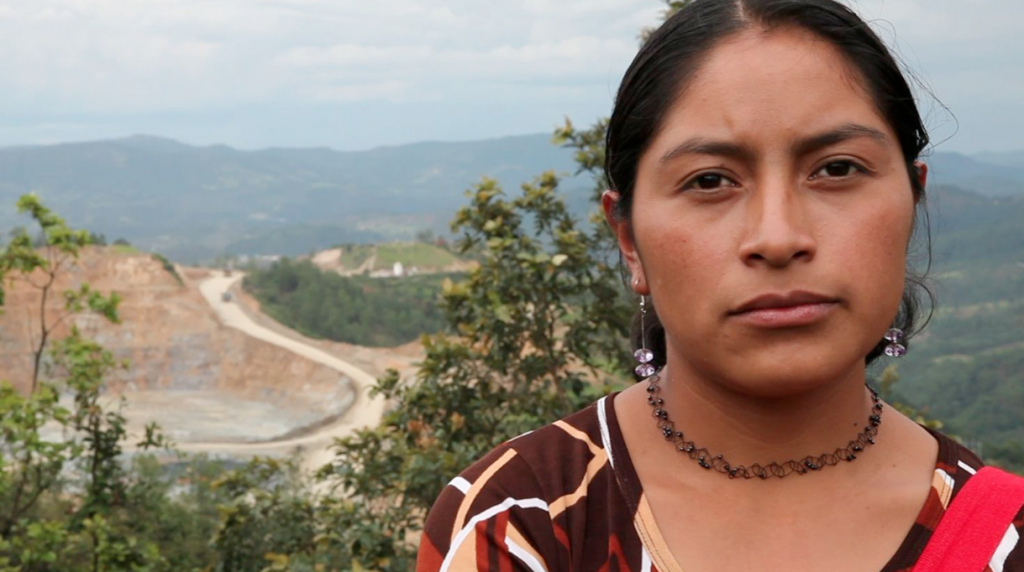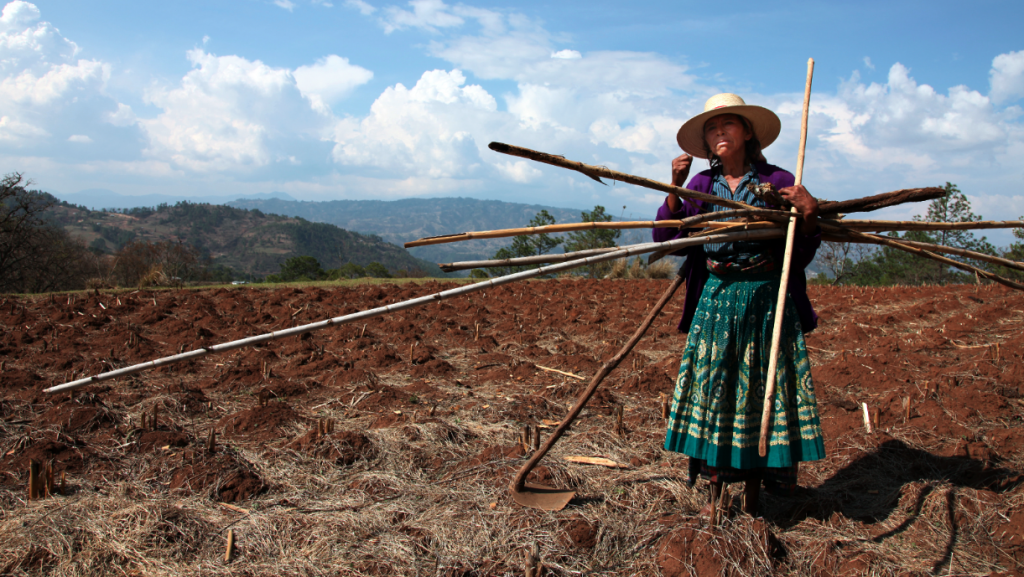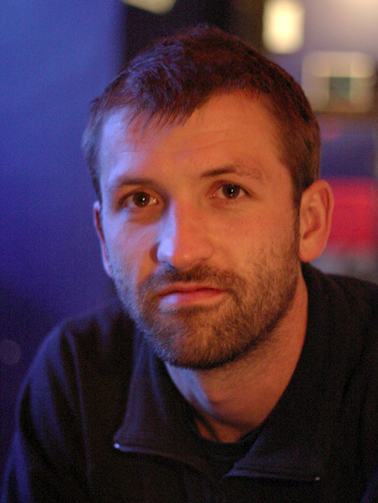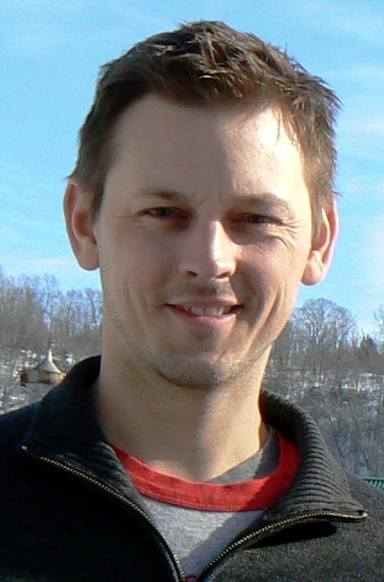
Last month, the Environmental Film Festival at Yale welcomed directors JT Haines and Andrew Sherburne for the world premiere of their documentary Gold Fever. The film details the arrival of Canadian gold mining giant Goldcorp, Inc. to the remote village of San Miguel Ixtahuacán, Guatemala, and the conflict that ensues.
Centered on the struggles of three women — Diodora, Gregoria and Crisanta, — Gold Fever is also a tale of North-South relations, historical American intervention in Central America, inter-community dynamics, and the high price of development. The film seamlessly weaves the three women with commentary from observers such as human rights activists Grahame Russell, MIT professor Noam Chomsky, and John Perkins, author of Confessions of An Economic Hitman.
Apart from detailing the community’s divided response to the development Goldcorp brings, the documentary also ponders the true value of an element that has been mined and sought for centuries. This discussion is particularly timely with the recent decline in gold’s price, a drop of 15.6% this year alone. In the days before and after the world premiere, headlines were filled with economist conjecture, producer forecasts, and even the benefits of a sudden price drop for Indian brides.
Sage writer Adedana Ashebir sat down with Haines and Sherburne before the world premiere of Gold Fever to hear more about the filmmaking process, the heroism of their protagonists, and how actions in the United States lead to consequences in Guatemala.
Sage: How did you get involved in this story?
Andrew Sherburne: The interest in this film started way back in the 1980s when our third director, Tommy Haines, went to Guatemala as a kid. There’s been a connection to the country since then.
JT Haines: I had my first trip to Guatemala in 2005. It was on a delegation to a mine-impacted community and I was really touched by the story. It really hung around with me for a few years. The mine was getting up and running, and when we had an opening in our filmmaking production schedule, I invited Andrew to come with me in 2009. We both went and did some test shooting and found the story as compelling as ever.

Sage: What did it take to get Gold Fever made?
AS: The film was in production over the course of total four years but it was probably two and half years of really heavy lifting. We had film crews visit a handful of times, as well as local videographers who were there every day on the ground to piece together the narrative. So in that sense it was a cooperative effort.
Sage: What were the challenges to making this film?
JH: There are three big ones. And for all the aspiring filmmakers out there, you want to keep an eye on these if you’re considering a project like this. Language, money and geography were all huge challenges for us in addition to the usual challenges, which are access, trust and relationships, equipment, etcetera etcetera.
Sage: There are a lot of issues in the film to unpack: indigenous rights, multinational corporate social responsibility, historical American intervention, community dynamics, economic development, just to name a few. Take us through some of the choices you made to tell this story in the way that you did.
AS: First and foremost, we had a responsibility to the people of San Miguel Ixtahuacán to tell their story as they’ve experienced it on the ground. But then we also wanted to connect it to all those issues that you mentioned. There are so many factors that have created the situation that exists in Guatemala today. We wanted to connect the dots from what is the experience for these people in their day-to-day lives to the grand, macro-economic global issues that have created this environment where the company can operate the way it does and these people have to deal with the consequences.
It was a big challenge because we are trying to juggle those two points of view, but ultimately I think it was important, something we had to do to connect to North American audiences. We had to come at it from both angles to help them understand.
JH: We certainly had to make some choices about what to cover. As you noted, there are many interconnected, very complex issues and we had to absolutely touch on some and let the audience’s own experiences inform their opinions. For example, we weren’t able to get into the details about some of the water pollution aspects nearly as much as is available from university research and NGO testimonials. We had to make quite a few choices like that as to what we could fit in the movie in a digestible manner without losing sight of the key story.
Sage: The story of Goldcorp Inc. and Guatemala is not a new one. You can easily switch out the commodity and the country and it’s almost the same story. So what is it about this particular story that was compelling for you both?

AS: I think any good narrative requires compelling characters, and so in our case that was a huge part of why this was an important and compelling story. It’s because the three women that were the heart of our story in San Miguel Ixtahuacán were just amazing people and their stories were really impactful. A huge part of it was discovering our central characters and wanting to bring their stories to the big screen.
JH: You’re absolutely right: This story is almost a universal story. Some of the challenges that are being experienced in Guatemala and especially San Miguel Ixtahuacán are being experienced in different ways and different points on the spectrum all over the world, including in our own country, which is one of the points that Magali Rey Rosa [columnist at Guatemala’s Prensa Libre] makes in the movie.We’ve got resource extraction issues, corporate ownership issues and democracy issues in our own country.
What’s interesting about gold in particular is that it has a very storied history, and the value of gold is a little harder to describe in that its not a commodity you can actually eat and burn. Do we need gold? One of the points several people made is that the gold we have — which is a lot — is mostly stored underground. So the process is apparently to get more gold from underground, bring it home and put it back underground.
Sage: Part of the film centers on the intimidation that the protagonists face during their fight with Goldcorp Inc. Did you as filmmakers face similar threats?
AS: We’ve been fairly obviously surveilled a couple times. But we’ve also been told that we’re safer because we’re North Americans — that the extra profile gives us a bit of cover. It’s a sad commentary that the reverse means people who are most engaged, within the community, would have more to fear.
Sage: What is the most powerful scene in the film for you?
JH: I really like the scene where we first meet Diodora on her land – we first see her with her granddaughter and the pigs enjoying a laugh, and then we see her reflecting with sadness about what it would mean for her granddaughter were she not around.
AS: The sequence that strikes me with a sort of quiet power is Diodora recovering from being shot, waving goodbye to her doctors, and walking out of the hospital, combined with her return to her land. That short sequence captures her fearless resilience in the face of overwhelming odds, and speaks to the spirit of the community as a whole.

Sage: There is a bit of hope toward the end of the film that’s then squashed at the end with the revival of the mine. What can audience members who are compelled by this story do after they leave the theater?
AS: I think there are a lot of ways that people can stay on top of this issue and look further into it. As filmmakers our job is to represent the story as truthfully as we received it. We don’t want to put any false hope in there, but at the same time I do think that there is real hope. I like to say my hope is Gregoria’s hope at the end of the film. She is going to continue the fight, and that in itself is an act of perseverance. To get up the next day and continue on. Any time you are dealing with a struggle as monumental as what these people are facing down there, it’s an uphill battle, and it’s a fight you may never “win,” but continuing the fight is a victory in itself.
Sage: What can we expect next from Northland Films?
AS: One of the challenges with documentary filmmaking is that it’s such a long intense process, so when you commit to something it’s years you’re likely committing. There are so many good stories out there, so we do want to explore a bit before we lock anything down.
Hopefully this film has a long shelf life. I think there are a lot of people that would be interested in this. There are a lot of communities facing these same issues, whether it’s gold mining, silver mining, copper mining, nickel mining or a host of other things. To share this film again is a particular interest of ours. I hope [those communities] find some parallels. I hope it inspires them to keeping doing whatever they’re doing in their communities, to stay active.
JH: Are you familiar with the Lilla Watson quote? The indigenous leader. She says, “If you have come here to help me, you are wasting our time. But if you have come because your liberation is bound up with mine, then let us work together.” And I think that really effectively captures what we all need to be keeping in mind when we tell stories about places that are not our land, our community, our country. But they are our issues, and we are very much connected.
Sage: What message do you want the audience to leave with?
AS: More than anything I hope that we open their eyes to this story, which we think is an important one. We have an obligation to ourselves, especially in the global north, to be better informed about the world at large, because our actions have profound consequences around the globe. I hope that if people leave with one thing, it is a broader knowledge of how we are connected to the people of Guatemala. How this is our story.
JH: Look, we are not just the oppressors here, we are also the oppressed. We all live in the same global corporate environment. We can’t just look at these problems as other people’s problems; we need to start seeing them as our problems too. We’ve got foreign-owned sulfide mining in [my home state of] Minnesota. It’s a huge problem right now. We’re the land of 10,000 lakes, we have very vulnerable waterways, and it’s the same acid-bleaching mining process. We’ve got the same issues. I want people to see this movie and see how it connects home directly.
Gold Fever held its international premiere in Guatemala at the “memoria, verdad, justicia” Festival and was screened for community members in San Miguel Ixtahuacán. The film most recently competed at the Independent Film Festival of Boston. For more on the film and future screenings, please visit http://www.goldfevermovie.com/